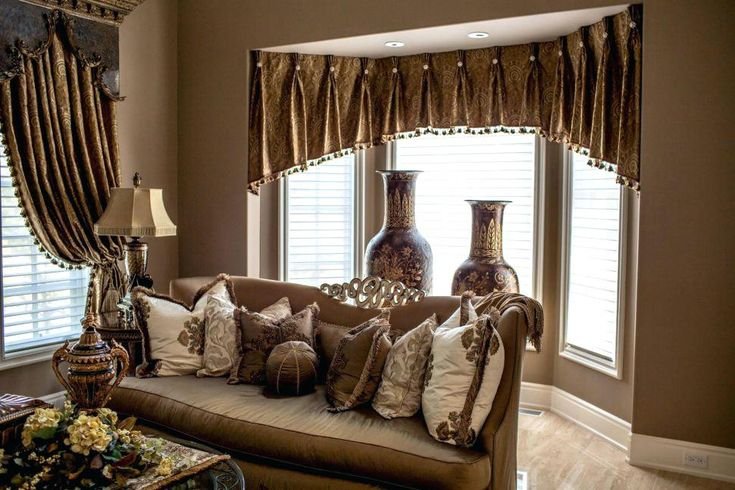Window Blinds Curtains: In the realm of interior design, window treatments hold a significant role in transforming a space from ordinary to extraordinary. Window blinds and curtains are two of the most popular and versatile options for controlling light, ensuring privacy, and enhancing the overall aesthetic appeal of a room. In this comprehensive guide, we’ll delve into the world of window blinds and curtains, exploring their types, benefits, styles, and considerations to help you make an informed decision for your home.
Types of Window Blinds Curtains
- Window Blinds: Window blinds are versatile coverings made of horizontal or vertical slats that can be adjusted to control light and privacy. They are available in various materials, including wood, faux wood, aluminum, and fabric. The most common types of window blinds include:
-
- Venetian Blinds: These are horizontal blinds with slats that can be tilted to control light and privacy. Venetian blinds are available in a wide range of materials and colors, making them suitable for various interior styles.
-
- Vertical Blinds: Vertical blinds consist of vertical slats that can be rotated to control light and privacy. They are commonly used for large windows, sliding glass doors, and office spaces.
-
- Roller Blinds: Roller blinds are made of a single piece of fabric that can be rolled up or down to adjust light levels. They offer a clean and minimalist look, making them suitable for modern interiors.
-
- Roman Blinds: Roman blinds are fabric shades that fold up in horizontal segments when raised. They add a touch of elegance and softness to a room’s decor.
- Curtains: Curtains are fabric panels that hang vertically from a rod or rail. They come in a wide range of fabrics, colors, patterns, and styles. Some common types of curtains include:
-
- Grommet Curtains: These curtains have metal rings (grommets) along the top that allow them to slide smoothly along the curtain rod. They offer a contemporary and casual look.
-
- Tab-Top Curtains: Tab-top curtains have fabric loops at the top that slip over the curtain rod. They provide a relaxed and informal appearance.
-
- Pleated Curtains: Pleated curtains have sewn-in pleats that create a structured and formal look. They are available in various pleat styles, such as pinch pleat, goblet pleat, and pencil pleat.

window blinds curtains dubai
Benefits of Window Blinds and Curtains
Light Control: One of the primary benefits of window blinds and curtains is their ability to control natural light. You can adjust the slats of blinds or pull curtains to regulate the amount of sunlight entering the room. This feature is especially valuable for creating a comfortable ambiance and protecting furnishings from sun damage.
Privacy: Both window blinds and curtains offer varying levels of privacy. You can adjust blinds to allow a certain degree of visibility while maintaining privacy. Curtains, when closed, provide a solid barrier to block the view from outside.
Aesthetic Appeal: Window treatments play a crucial role in enhancing the visual appeal of a room. The choice of blinds or curtains can complement the overall design theme, add color and texture, and contribute to the room’s atmosphere.
Insulation: Curtains, especially those made of heavier fabrics, offer additional insulation by preventing heat loss during the colder months and heat gain during the warmer months. This can lead to energy savings and a more comfortable indoor environment.
Noise Reduction: Thick, heavy curtains can help reduce outside noise, providing a quieter and more serene living space.
Choosing the Right Style
Selecting the appropriate style of window blinds or curtains is essential to achieving the desired aesthetic for your space. Consider the following factors when making your choice:
Interior Design Theme: The style of window treatment should align with the overall design theme of the room. For example, sleek and modern roller blinds work well in contemporary spaces, while elegant drapes are a better fit for traditional settings.
Color and Fabric: Choose colors and fabrics that complement the existing color palette and textures in the room. Lighter fabrics can create an airy and spacious feel, while darker fabrics add warmth and coziness.
Functionality: Consider the primary purpose of the window treatment. If you need maximum light control and privacy, opt for blinds with adjustable slats. If you’re looking for softness and decorative appeal, curtains are an excellent choice.
Window Size and Type: The size and type of window also influence your decision. Larger windows may require heavier curtains or multiple blinds to cover the space effectively.
Maintenance: Keep maintenance in mind when selecting your window treatment. Blinds with horizontal slats may require more frequent dusting, while curtains may need occasional washing or dry cleaning.
Installation and Maintenance Window Blinds Curtains
Proper installation and maintenance are crucial for ensuring the longevity and functionality of your window blinds and curtains.
- Installation: Follow manufacturer guidelines for installation, or consider seeking professional help to ensure proper fit and functionality. Incorrect installation can lead to difficulties in opening and closing the blinds or curtains.
- Maintenance: Regular maintenance helps keep your window treatments in top condition. Dust blinds regularly using a soft cloth or vacuum attachment. For curtains, check the care instructions for washing or dry cleaning recommendations.
FAQs About Window Blinds and Curtains
Q: What’s the difference between window blinds and curtains?
A: Window blinds are adjustable coverings with horizontal or vertical slats that can be tilted for light control and privacy. Curtains, on the other hand, are fabric panels that hang vertically and can be opened or closed to regulate light and provide privacy. Both options have their own aesthetic and functional benefits, and the choice depends on your preferences and needs.
Q: Which type of window treatment is best for bedrooms?
A: Bedrooms often require a balance between privacy and light control. For this reason, curtains are a popular choice. Opt for blackout or thermal curtains to keep out unwanted light and regulate room temperature. If you prefer blinds, consider wooden Venetian blinds that offer both privacy and a cozy atmosphere.
Q: Are there eco-friendly options for window treatments?
A: Yes, there are several eco-friendly options available. For curtains, look for organic fabrics like cotton, linen, or bamboo. These materials are sustainable and have a lower environmental impact. Additionally, consider blinds made from renewable materials like bamboo or sustainable wood, which can add a touch of nature to your space.
Q: How do I measure windows for blinds or curtains?
A: Measuring windows accurately is crucial for getting the right fit. For blinds, measure the width and height of the window frame and consider whether you want an inside or outside mount. For curtains, measure the width and height of the area you want to cover. To create the illusion of larger windows, mount the curtain rod slightly above and wider than the window frame.
Q: Can I mix and match blinds and curtains in the same room?
A: Absolutely! Mixing blinds and curtains can create a layered and dynamic look in a room. For instance, you could install Venetian blinds for practical light control and add curtains with a pop of color or pattern to enhance the decor. Just ensure that the styles, colors, and materials complement each other and the overall room design.
Conclusion Window Blinds Curtains
Window blinds and curtains are more than just functional coverings; they are essential design elements that can elevate the aesthetic and ambiance of any room. Whether you choose the versatility of blinds or the elegance of curtains, careful consideration of style, material, and functionality will help you make the perfect choice for your space. Remember, the right window treatment not only enhances the overall look of a room but also contributes to your comfort and well-being.

